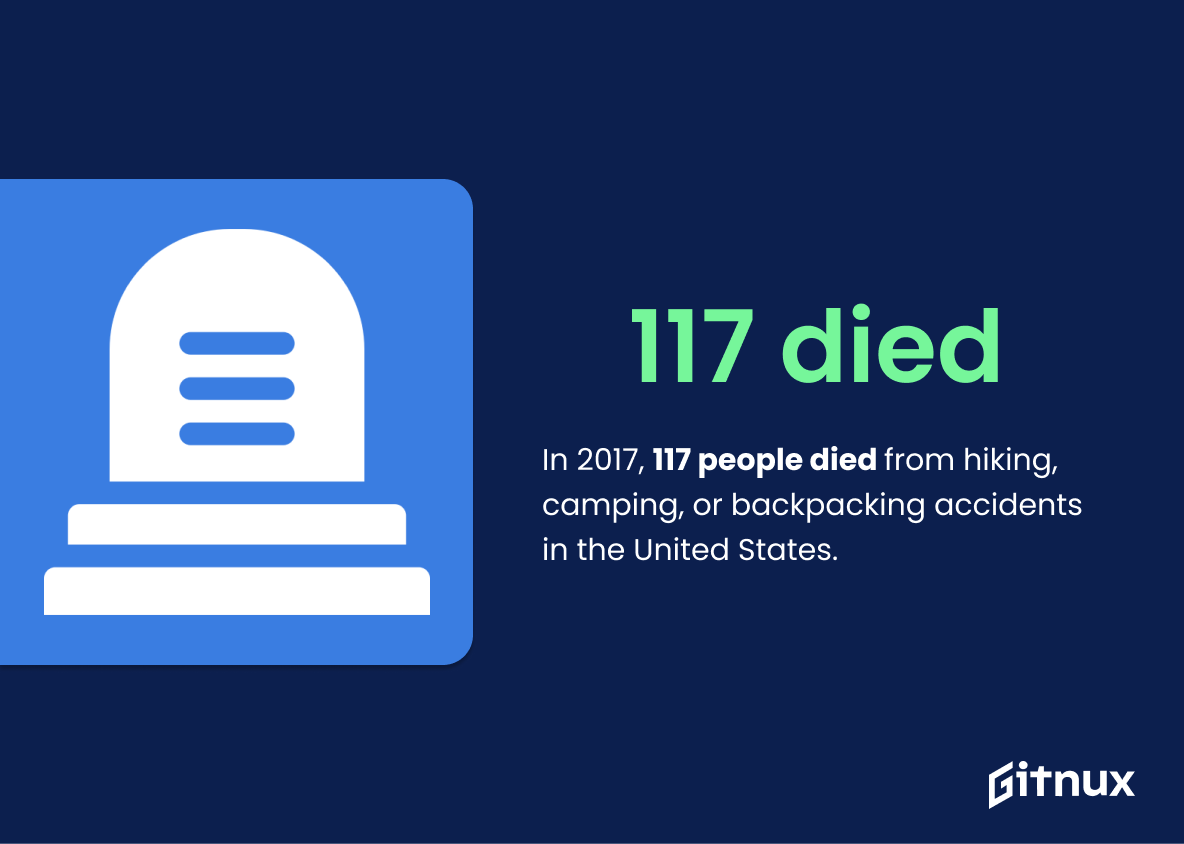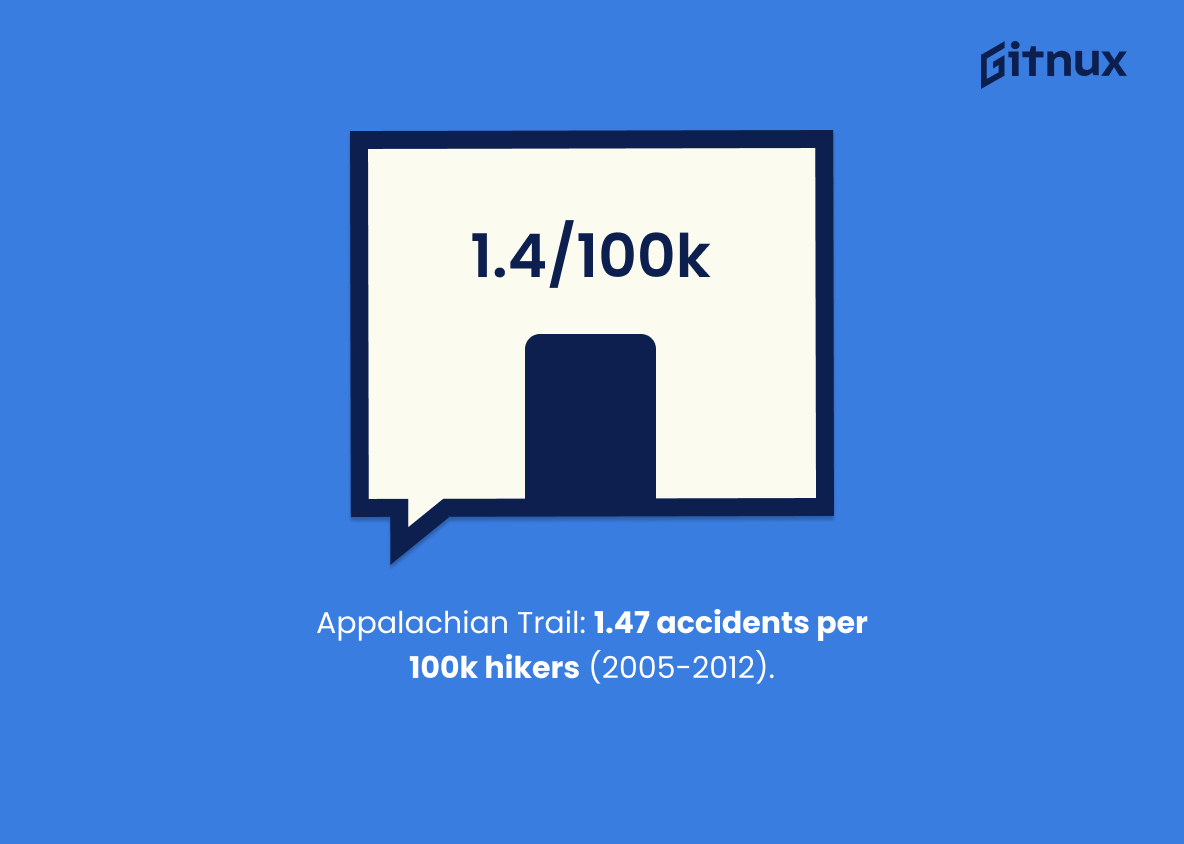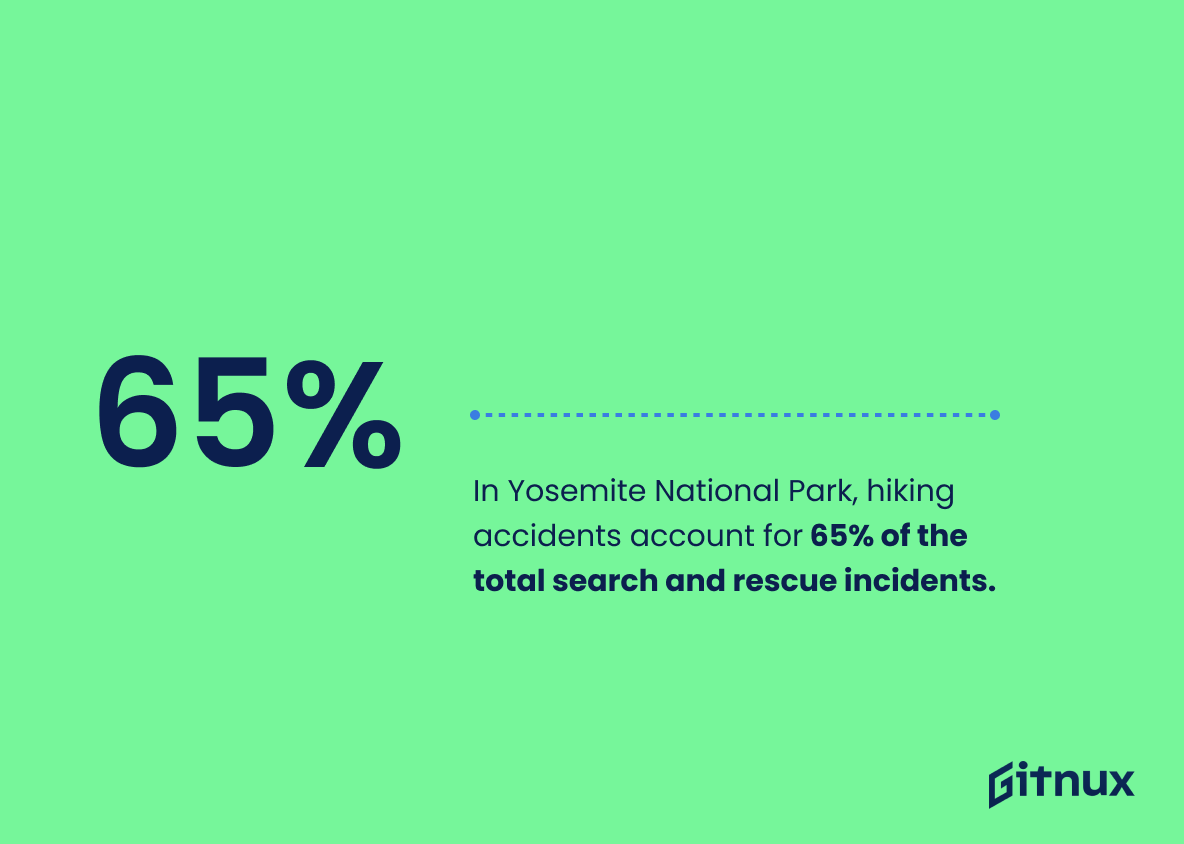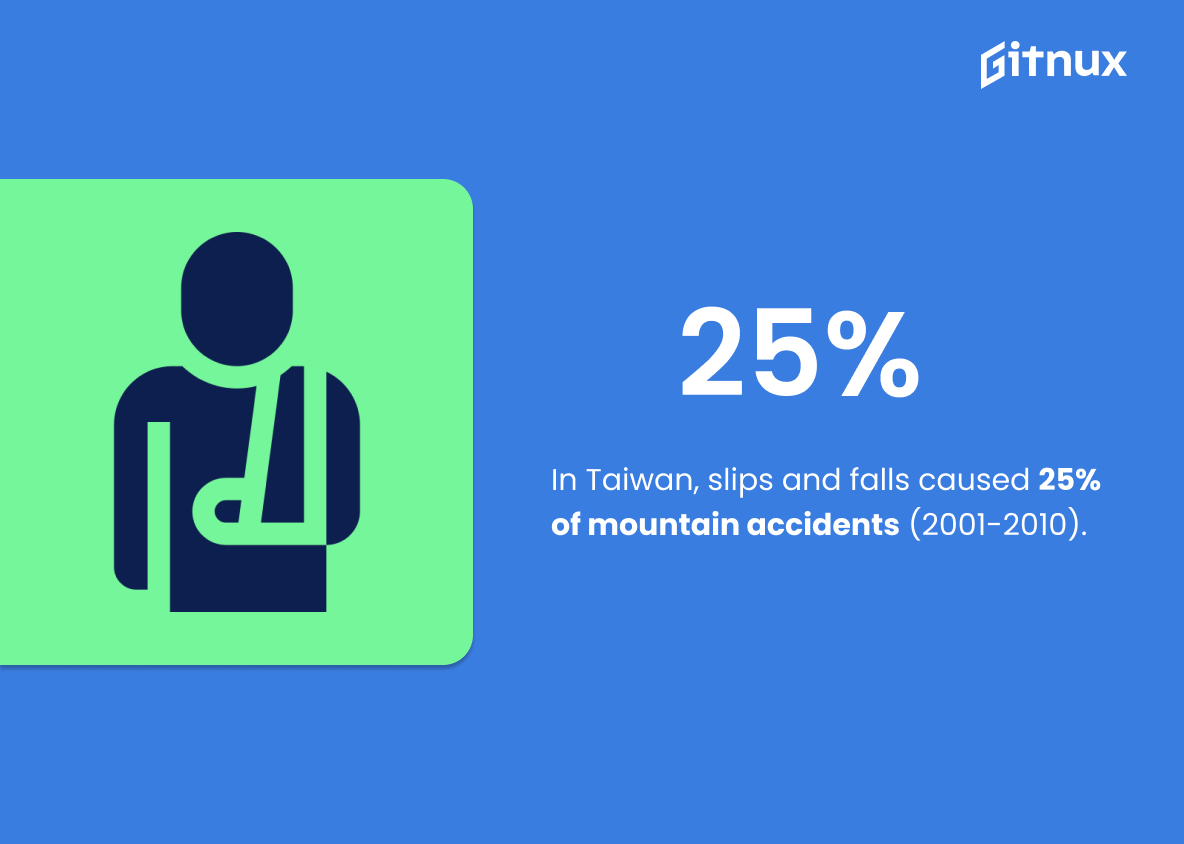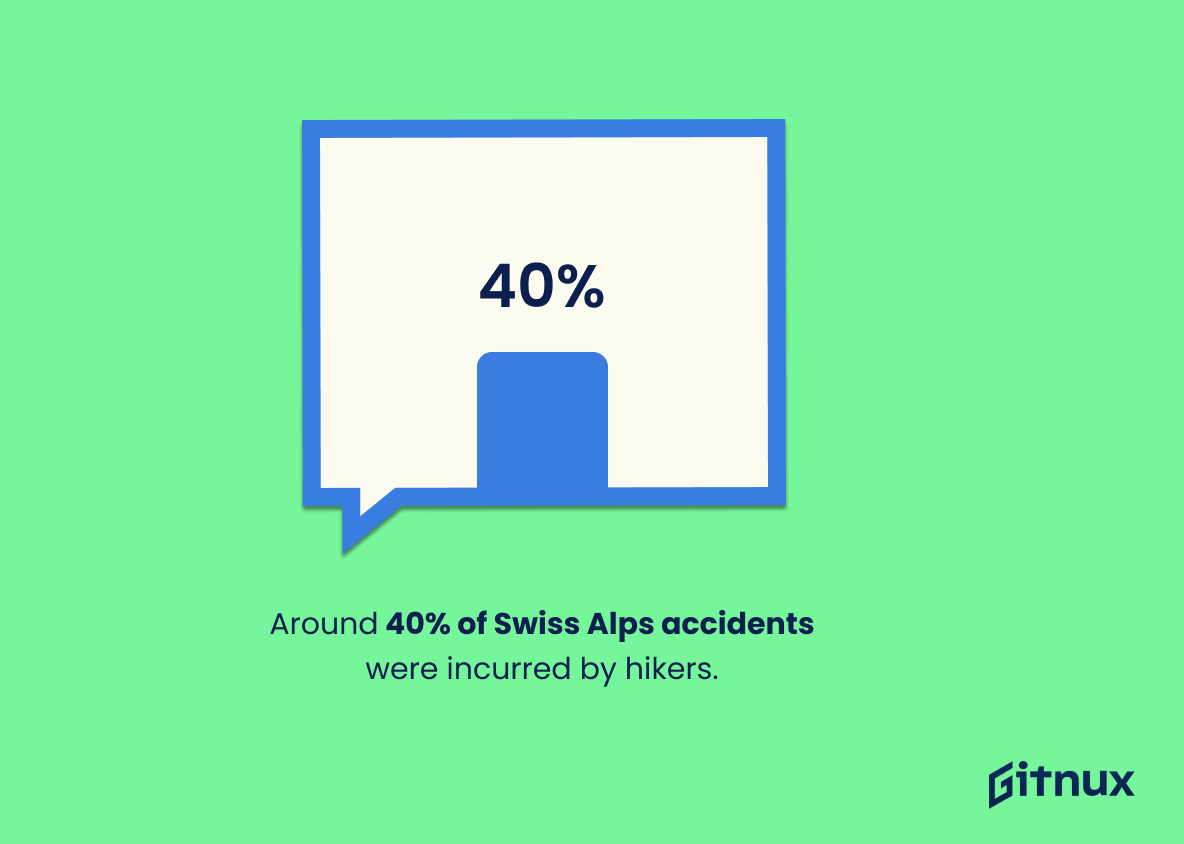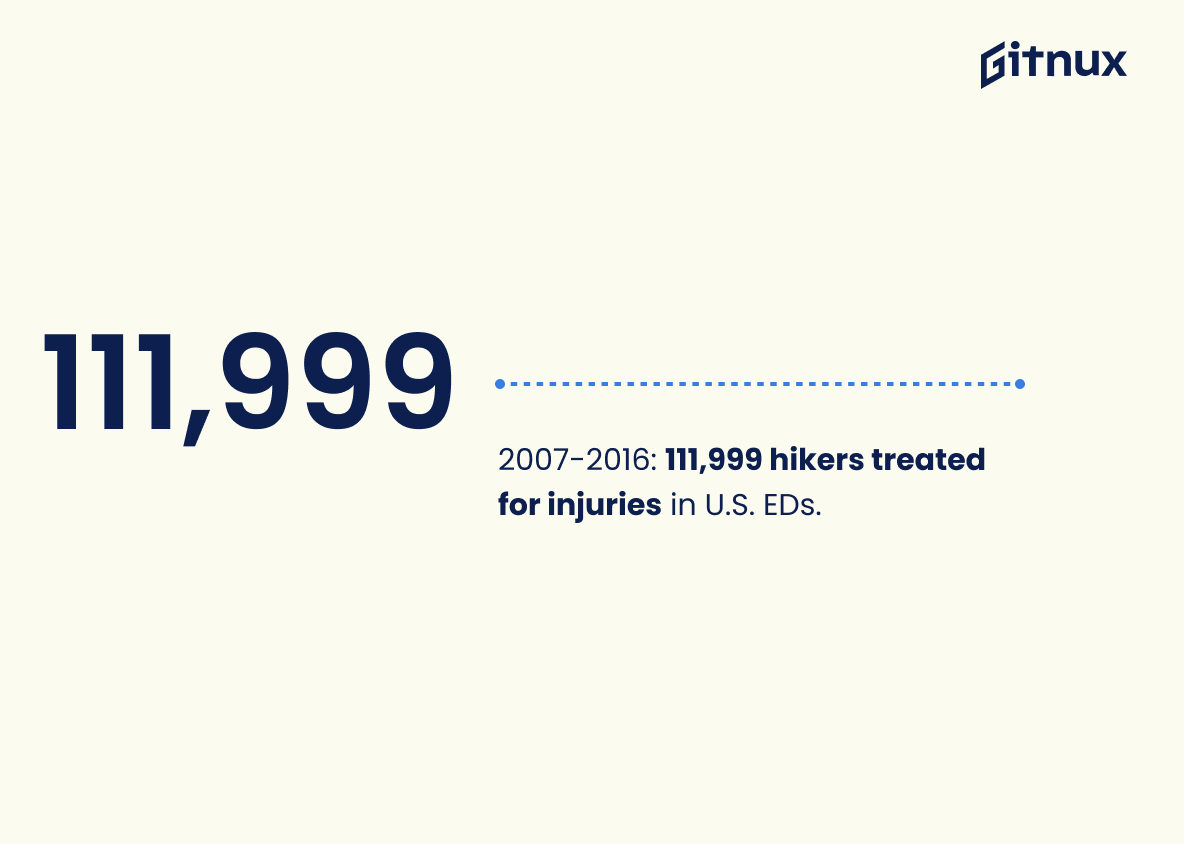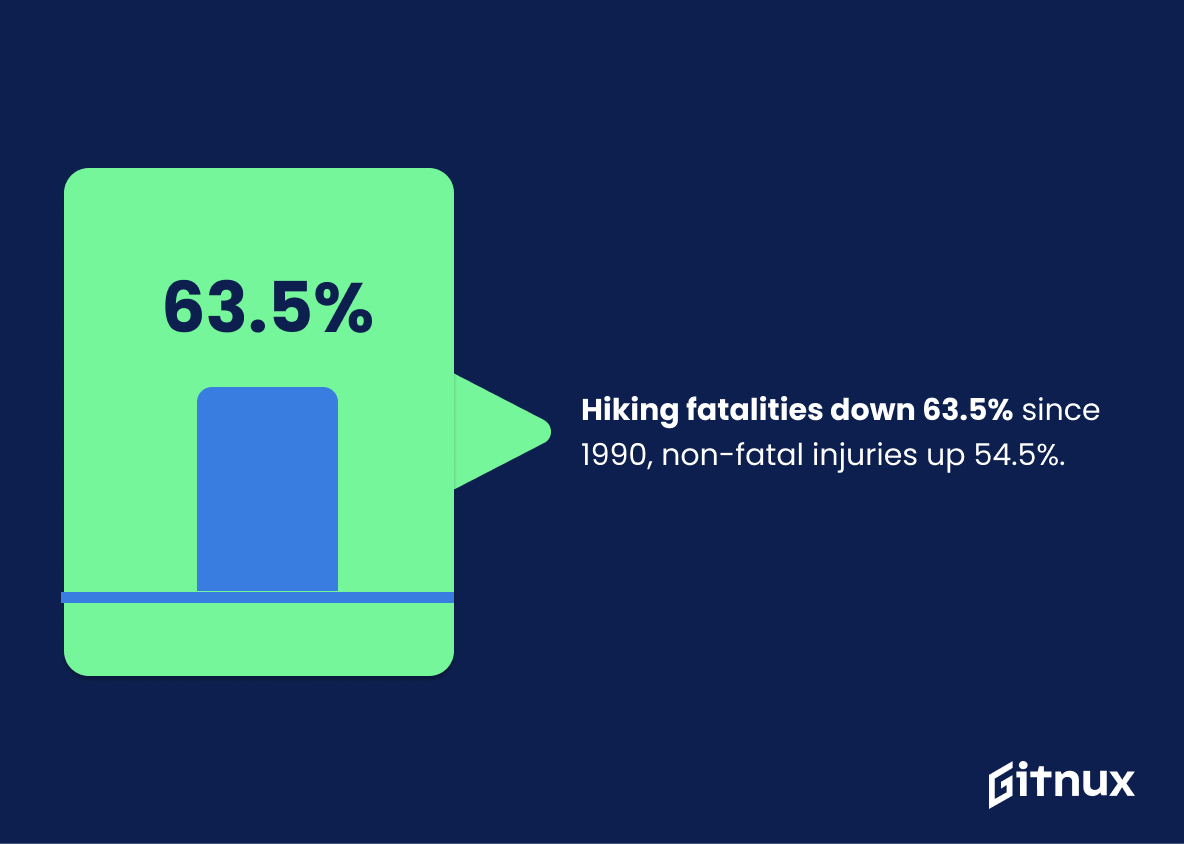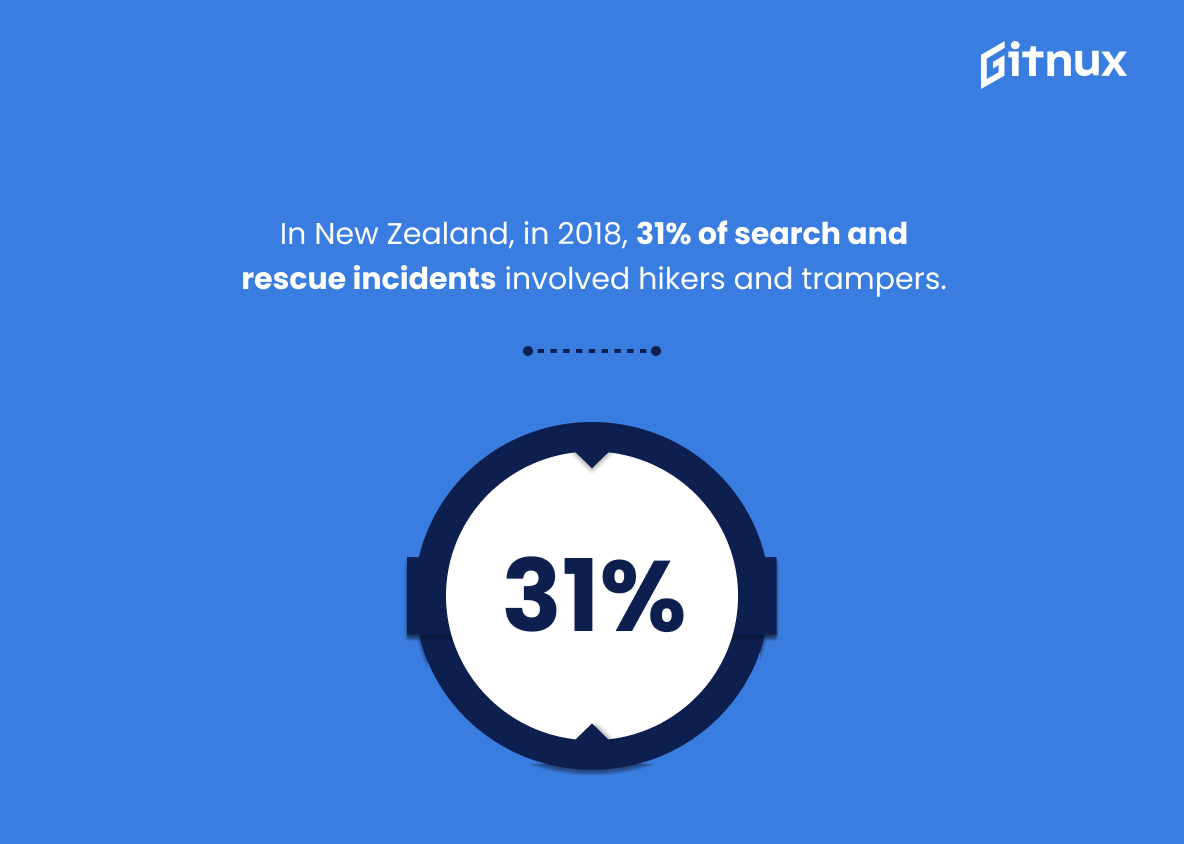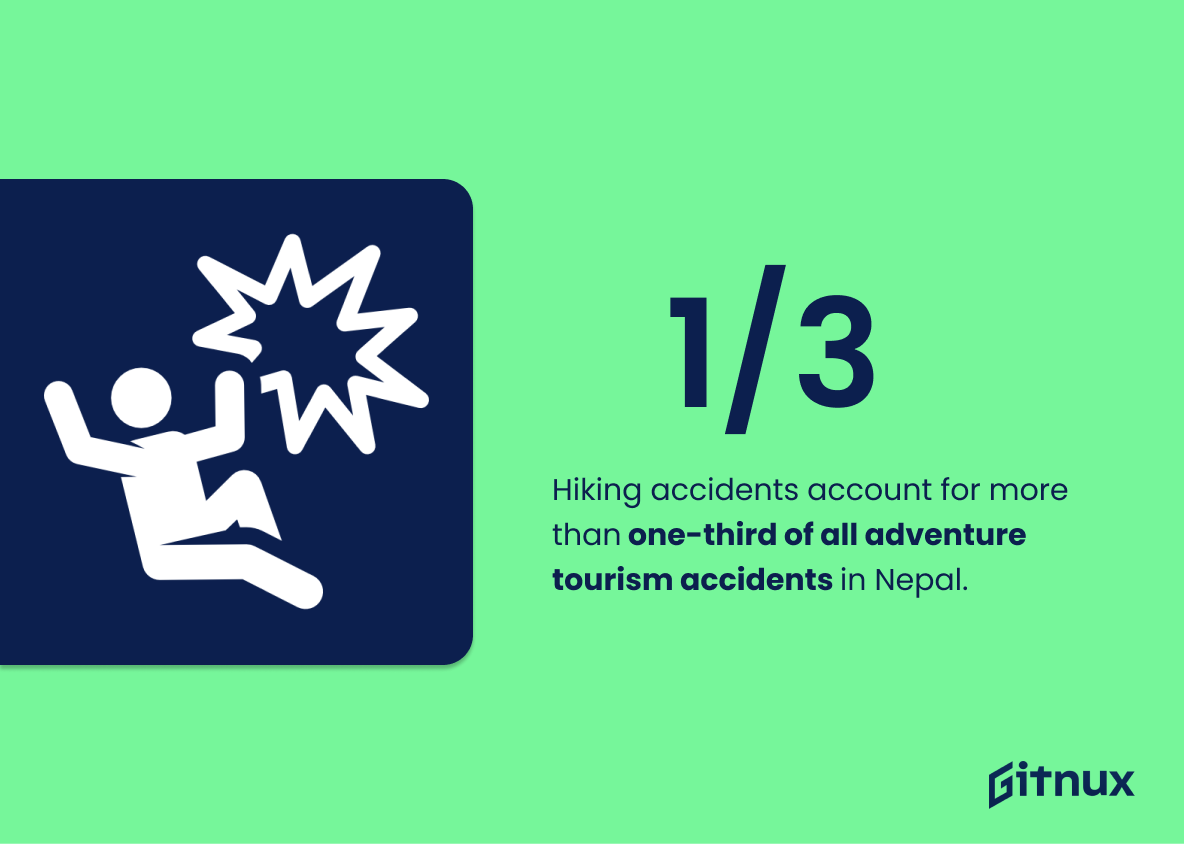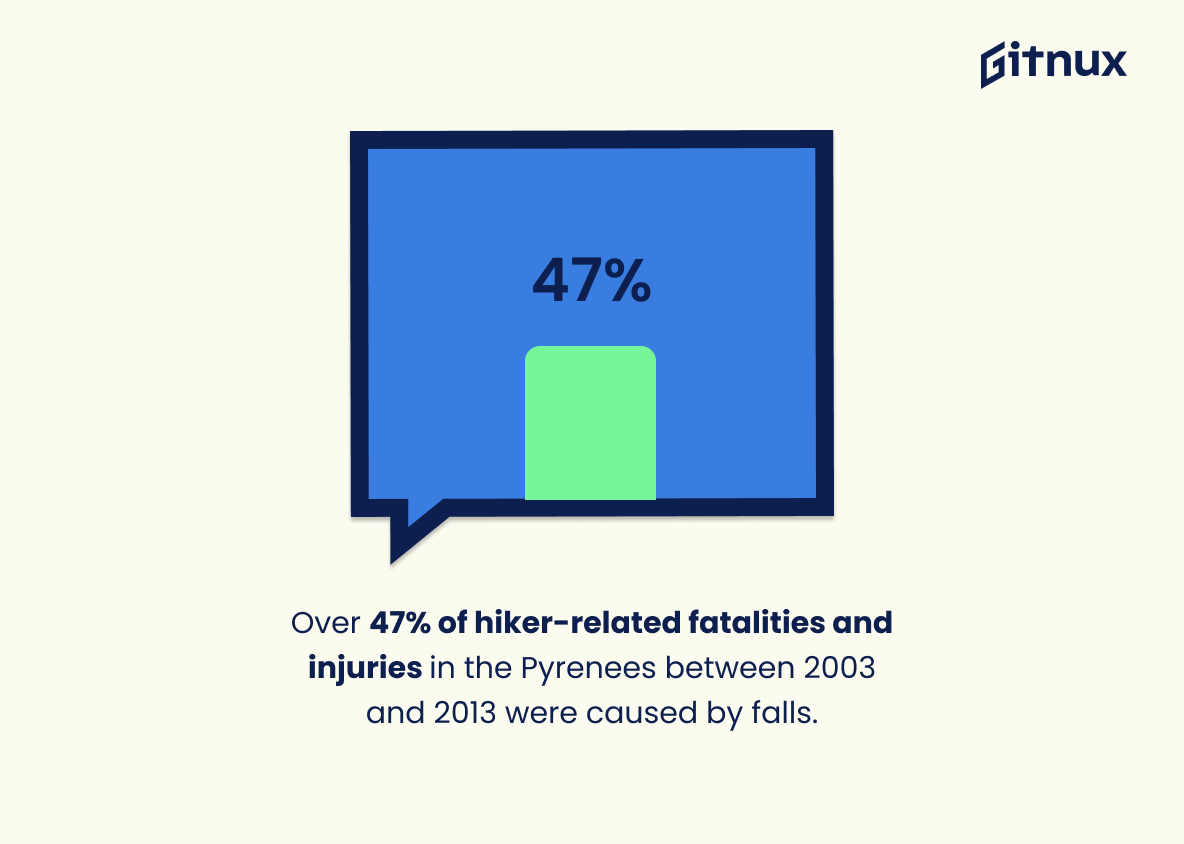Hiking is a popular activity that can be enjoyed by people of all ages and abilities. Unfortunately, it also carries risks, as evidenced by the numerous hiking accident statistics from around the world. In this blog post, we will explore 20 different statistics related to hiking accidents in order to gain insight into how common they are and what causes them. We’ll look at data from countries such as the United States, Scotland, Taiwan, Switzerland, New Zealand and Australia – just to name a few. By understanding these numbers better we can take steps towards improving safety for hikers everywhere. So let’s dive right in.
This statistic is a stark reminder of the potential dangers of hiking in national parks in the U.S. It highlights the importance of taking safety precautions when embarking on a hike, as 14% of all accidents reported in national parks are related to hiking.
Between 2011 and 2015, 885 individuals suffered death or injury from a fall or trip while hiking within the United States.
This statistic is a stark reminder of the potential dangers of hiking. It serves as a warning to hikers to be aware of their surroundings and take the necessary precautions to ensure their safety. It also highlights the importance of having the right equipment and knowledge when embarking on a hike.
Hiking Accident Statistics Overview
In 2017, 117 people died from hiking, camping, or backpacking accidents in the United States.
This statistic serves as a stark reminder of the potential dangers of hiking, camping, and backpacking. It highlights the importance of taking the necessary precautions to ensure a safe and enjoyable outdoor experience.
The Appalachian Trail Conservancy reports an average injury rate of 1.47 accidents per 100,000 hikers between 2005-2012.
This statistic is a testament to the Appalachian Trail Conservancy’s commitment to safety, as it shows that the average injury rate of hikers on the trail is relatively low. It is a reassuring figure for those considering a hike on the Appalachian Trail, as it indicates that the trail is a safe and enjoyable experience for the majority of hikers.
In Yosemite National Park, hiking accidents account for approximately 65% of the total search and rescue incidents.
This statistic is a stark reminder of the importance of taking proper safety precautions when hiking in Yosemite National Park. It highlights the fact that the majority of search and rescue incidents in the park are due to hiking accidents, emphasizing the need for hikers to be aware of the potential risks and take the necessary steps to protect themselves.
In Scotland, hillwalking and climbing are the most common activities associated with mountain incidents, accounting for 47% of all incidents in 2019.
This statistic is a stark reminder of the dangers of hillwalking and climbing in Scotland. It highlights the importance of taking the necessary precautions when engaging in these activities, as they are the most common activities associated with mountain incidents. Knowing this information can help hikers and climbers be more aware of the risks and take the necessary steps to ensure their safety.
About 11,000 injuries related to hiking and backpacking are reported in the US every year.
This statistic is a stark reminder of the potential risks associated with hiking and backpacking. It serves as a warning to hikers and backpackers to take the necessary precautions to ensure their safety while out in the wilderness. It also highlights the importance of having the right equipment and knowledge to stay safe while enjoying the outdoors.
In Taiwan, nearly 25% of mountain accidents between 2001 and 2010 were caused by slips and falls.
This statistic is a stark reminder of the dangers of hiking in Taiwan. It highlights the fact that slips and falls are a major cause of mountain accidents, and that hikers should take extra care when traversing the terrain. It also serves as a warning to hikers to be aware of their surroundings and to take the necessary precautions to ensure their safety.
Around 40% of Swiss Alps accidents were incurred by hikers.
This statistic is a stark reminder of the dangers of hiking in the Swiss Alps. It highlights the importance of taking the necessary precautions when venturing into the mountains, as 40% of accidents could have been avoided with the right safety measures.
Between 2007 and 2016, the total estimated number of individuals with hiking injuries presenting to U.S. emergency departments was 111,999.
This statistic serves as a stark reminder of the potential risks associated with hiking. It highlights the fact that, over the course of a decade, a significant number of individuals have been injured while engaging in this activity. This serves as a warning to hikers to take the necessary precautions to ensure their safety.
Fatalities from hiking-related accidents have decreased by 63.5% since 1990, while non-fatal injuries have increased by 54.5%.
This statistic paints a vivid picture of the state of hiking-related accidents: while fatalities have significantly decreased, non-fatal injuries have risen. This indicates that, while the risk of death has decreased, the risk of injury has increased. This is an important insight for hikers to consider when planning their trips and taking safety precautions.
In New Zealand, in 2018, 31% of search and rescue incidents involved hikers and trampers.
This statistic is a stark reminder of the dangers of hiking and tramping in New Zealand. It highlights the importance of taking the necessary precautions when venturing into the outdoors, as well as the need for proper training and preparation. It also serves as a warning to those who may be unaware of the risks associated with these activities.
Hiking accidents account for more than one-third of all adventure tourism accidents in Nepal.
This statistic is a stark reminder of the potential risks associated with hiking in Nepal. It serves as a warning to those considering embarking on an adventure in the region, and highlights the importance of taking the necessary precautions to ensure a safe and enjoyable experience.
Over 47% of hiker-related fatalities and injuries in the Pyrenees between 2003 and 2013 were caused by falls.
This statistic is a stark reminder of the potential dangers of hiking in the Pyrenees. It highlights the importance of taking the necessary precautions when embarking on a hike in the region, such as wearing appropriate footwear and carrying the right safety equipment. It also serves as a warning to hikers to be aware of their surroundings and to take extra care when navigating difficult terrain.
Conclusion
Hiking, while enjoyable for all ages, carries risks, as shown by global accident statistics. In the U.S., hiking accidents form a significant part of national park incidents, with numerous injuries and fatalities reported annually. These statistics underline the importance of safety measures for hikers, such as route research, carrying essential supplies, and informing others of their plans. Adhering to these precautions can help reduce accidents and enjoy nature safely.
References
0. – https://www.www.nps.gov
1. – https://www.www.ncbi.nlm.nih.gov
2. – https://www.injuryfacts.nsc.org
3. – https://www.www.nei.nih.gov
4. – https://www.www.researchgate.net
5. – https://www.pubmed.ncbi.nlm.nih.gov
6. – https://www.www.mountaineering.scot
7. – https://www.www.police.govt.nz
8. – https://www.www.outdoorproject.com
9. – https://www.journals.plos.org
10. – https://www.www.wemjournal.org
11. – https://www.link.springer.com
